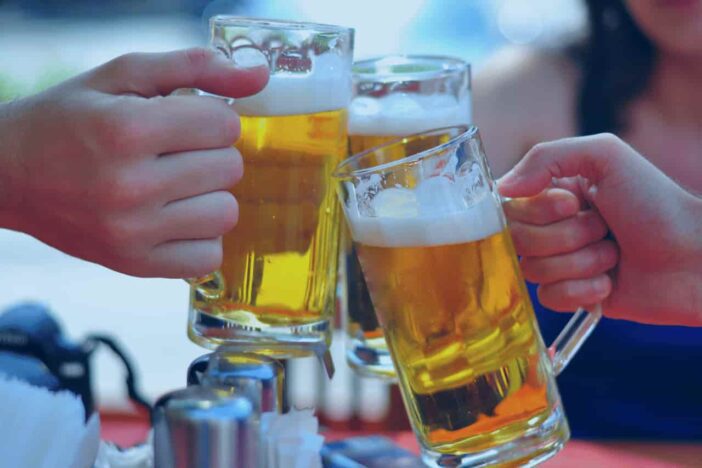Since the onset of the COVID-19 pandemic, the restaurant industry has faced unprecedented challenges. With concerns about safety and uncertainty lingering in the minds of consumers, restaurant owners must navigate a new landscape to ensure profitability.
Plus, it’s not difficult to discern that an extremely unsettled episode of COVID-19, bringing long periods of isolation, can lead to a reduced desire for dining out. More to the point, the forceful confinement has led to the development lesser natural preference for having food outside.
A recent survey by Statista revealed that a staggering 61% of Americans were apprehensive about dining out in 2020. However, there is light at the end of the tunnel, as the same survey found this figure to be reduced to 32% in 2022.
In this blog, we will explore actionable strategies and innovative approaches that restaurant owners can employ to rebuild customer trust and maximize profits.
Strategic Menu Optimization for Increased Revenue
To maximize profits in the post-COVID era, restaurant owners should focus on strategic menu optimization. This involves analyzing customer preferences, identifying top-performing dishes, and eliminating underperforming items. Doing so will enable you to simplify operations and fuel revenue.
One effective strategy is to highlight your most profitable dishes and place them strategically on the menu. Use techniques like visual cues and descriptive language to entice customers and increase their willingness to order high-margin items. Consider offering specials or combo deals to drive sales and create a sense of value.
Another key aspect of menu optimization is incorporating locally-sourced and organic ingredients. In recent years, consumers have become increasingly conscious of the food they consume. When you offer organic or locally-sourced foods, you not only cater to this growing demand but also enhance the perception of your restaurant, potentially attracting a wider customer base.
Customer’s preferences toward the latter aspect arise from the act that in many aspects, it supports the local economy and has high nutritional values. A survey by the National Restaurant Association found that 38% of adult consumers expressed a higher inclination to choose a restaurant that offers locally-sourced foods, while an additional 30% preferred establishments that prioritize environmentally friendly and organically raised ingredients.
Figures like these are important for restaurant owners to watch out for. This is because a growing number of entities are entering into hospitality fray. Plus, the report highlights that this approach is particularly favored by 48% of millennials and 40% of Gen Zs, making it even more essential for restaurant owners to consider when optimizing their menus for increased revenue.
Leveraging Technology to Drive Profits
According to a recent survey conducted across the U.S., a significant 71% of respondents believe that restaurant technology, whether online or on-premise, enhances their overall guest experience.
Though implementing technology isn’t feasible for every owner, they should look for alternatives and use other indirect payment options. This is because in the post-COVID era, leveraging technology can be a game-changer for restaurant owners looking to maximize profits.
Here are three key technologies that can drive profitability:
Mobile Apps and Loyalty Programs
Developing a dedicated mobile app empowers restaurant owners to offer a “wow-worthy” experience for customers. Mobile apps allow for easy ordering, customized promotions, and integration of loyalty programs.
Offering exclusive rewards and incentives through a digital loyalty program can help restaurants encourage repeat visits and foster customer loyalty, ultimately driving profits.
Tableside Ordering and Payment Solutions
Tableside ordering and payment solutions enable servers to conveniently receive orders and handle payments directly at the customer’s table, utilizing handheld devices. This technology improves order accuracy, speeds up table turnover, and enhances the overall dining experience.
Reducing wait times for customers can enable restaurants to increase table occupancy and generate higher revenue per seating.
Restaurant Management Platform
A comprehensive restaurant management platform provides a centralized solution to manage various aspects of the business, including inventory management, staff scheduling, and sales analytics. This technology enables restaurant owners to optimize operations, minimize waste, and make data-driven decisions to maximize profitability.
Gaining insights into key performance metrics, such as best-selling items and peak hours, can assist owners in effectively allocating resources and driving revenue growth.
According to CheddrSuite, a platform dedicated to transforming hospitality management, a restaurant management platform comes with a variety of beneficial features:
- Employee Scheduling: Simplify the process of creating and managing staff schedules, ensuring optimal staffing levels while minimizing labor costs.
- Shift Trade Board: Empower employees to request and manage shift changes or swaps, fostering a collaborative and flexible work environment.
- Staff Communication: Facilitate real-time messaging, updates, and announcements to enhance communication and keep the entire team informed and connected.
- Documents and HR: Centralize and organize required documents such as training manuals, compliance forms, and employee records, simplifying HR processes and administrative tasks.

Implementing Efficient Operational Practices
In the challenging post-COVID era, implementing efficient operational practices is crucial for restaurant owners to maximize profits and overcome supply chain disruptions.
As per the 2022 State of the Restaurant Industry Report, nearly 96% of restaurant operators faced difficulties in 2021 due to supply delays or shortages of necessary food and beverage items. These challenges are anticipated to continue throughout the year 2022. Effectively tackling these challenges means adopting efficient operational practices.
Here are three efficient operational practices to consider:
Inventory Optimization and Supplier Diversification
Effectively managing inventory is crucial in reducing waste and addressing the effects of supply chain disruptions. Optimizing inventory levels based on demand forecasts and implementing just-in-time inventory practices empowers restaurant owners can reduce excess stock and minimize costs.
Plus, diversifying suppliers and establishing relationships with multiple vendors can help mitigate the risk of shortages and delays, ensuring a more stable and reliable supply chain.
Streamlined Kitchen Workflow and Process Automation
Optimizing the kitchen workflow is vital for maximizing efficiency and reducing operational costs. By analyzing the layout, equipment placement, and order flow, restaurant owners can identify bottlenecks and make necessary adjustments to streamline operations.
Incorporating process automation technologies, such as kitchen display systems and order management software, can enhance accuracy, speed, and communication, resulting in more efficient operations and improved profitability.
Effective Labor Management and Cross-Training
Labor costs often form a significant portion of a restaurant’s expenses. Efficient labor management practices, such as utilizing staff scheduling software and forecasting tools, can help optimize staffing levels based on anticipated demand. Cross-training employees in multiple roles ensures flexibility and enables seamless transitions during peak times, minimizing the need for additional staff and optimizing labor costs.
Implementing these efficient operational practices can help restaurant owners streamline processes, leverage technology, and make data-driven decisions, ultimately maximizing profits and ensuring long-term success.
Customer Engagement Strategies
In the dynamic post-COVID era, effective customer engagement strategies play a crucial role in maximizing profits for restaurant owners. Engaging customers not only fosters loyalty but also attracts new patrons through positive word-of-mouth and online reviews. Here are three customer engagement strategies to consider:
Speed of Service
In today’s fast-paced world, customers value prompt service and efficient dining experiences. Implementing strategies to enhance the speed of service, such as streamlining order-taking processes, optimizing kitchen workflows, and training staff to work efficiently, can significantly improve customer satisfaction.
Also, embracing technology solutions like self-ordering kiosks or mobile ordering apps can expedite the ordering process and reduce waiting times, enhancing the overall dining experience.
Around the world, it has been a common complaint of people who regularly dine out that they don’t experience desired services as far as time is concerned. The recent study by Deloitte has proved to be an effective source to glean information about customers’ perceptions of the speed of service.
According to the study, 68% of respondents, whether dining on-premises or off, expressed a desire not to wait more than 30 minutes for their food. Considering this statistic, the time is ripe for owners to expedite this aspect and increase the chances of outpacing their competitors.
Safety and Cleanliness Protocols
With health and safety concerns at the forefront, prioritizing robust safety and cleanliness protocols is important for customer engagement. Communicate transparently with customers about the measures in place to ensure their well-being, such as frequent sanitization, physical distancing, and staff training on hygiene practices.
Visible signage and clear communication about safety protocols instill confidence in customers and create a welcoming environment. Regularly updating and adhering to health guidelines further reinforces the commitment to providing a safe dining experience.
It’s a known reality that COVID-19 spreads through infected surfaces, making safety and cleanliness a grim issue for restaurant owners. Thus, they need to pay heed to whatever is required to implement strong safety and cleanliness protocols. A recent survey could act as a motivator for those less willing to act on this aspect.
As per the survey, roughly 33% of all consumers prioritize the implementation of robust safety and cleanliness measures. This data emphasizes the significance of implementing visible and effective safety measures, such as frequent sanitization, physical distancing, and staff training, to meet customer expectations and encourage their continued patronage.
Personalized Rewards and Loyalty Programs
Implementing personalized rewards and loyalty programs can drive customer engagement and repeat business. Collect customer data through sign-ups or loyalty memberships to tailor offers and incentives based on individual preferences. This could include personalized birthday rewards, exclusive discounts, or freebies based on past orders.
Summing Up
In the post-COVID era, maximizing profits for restaurant owners requires a strategic approach and adaptability to the evolving landscape.
When they implement a combination of efficient operational practices, leveraging technology, embracing creative marketing and customer engagement strategies, and prioritizing safety and cleanliness protocols, restaurants can position themselves for success.
Embracing these strategies can help restaurant owners effectively navigate the challenges hurled by the COVID-19 pandemic and thrive in an ever-changing industry, ultimately maximizing profits and ensuring long-term success.





